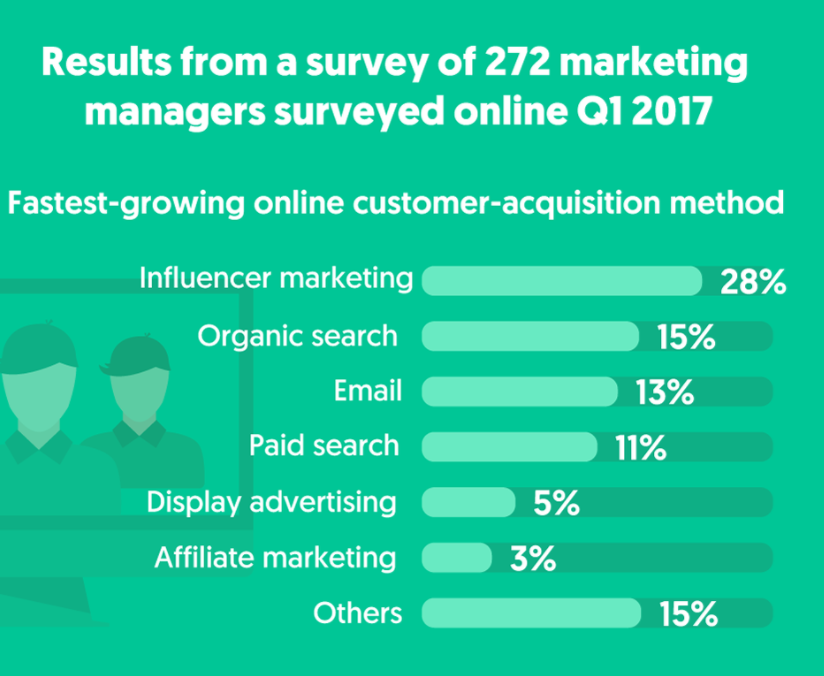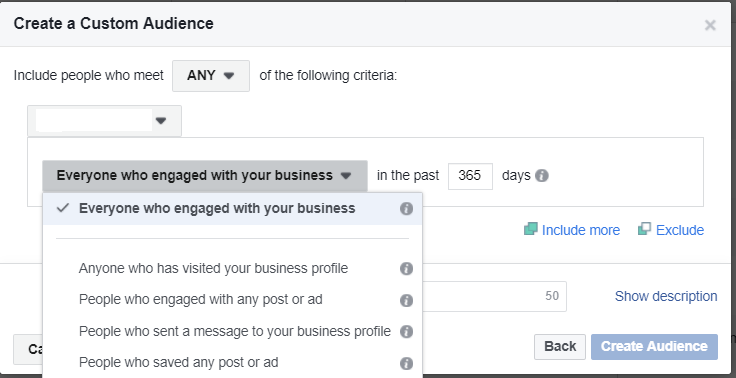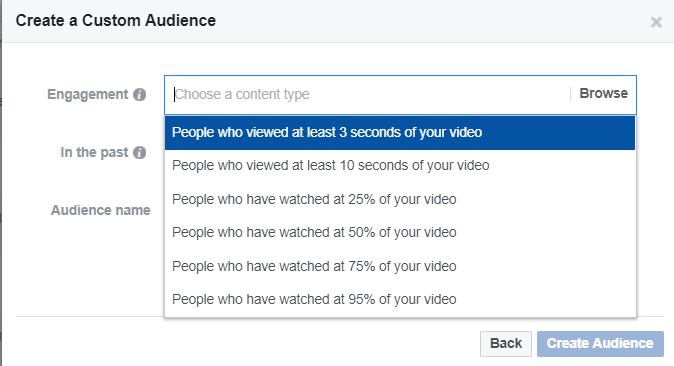Over the past few months we have covered influencer marketing a lot. We have talked about how influencer posts more than doubled in 2017, how to rent pages, and new influencer regulations.
Influencer marketing has also become one of the fastest ways to acquire customers in 2017.

(source)
In this article I’m going to provide you with some best-practice tips to increase the ROI you get from your influencers by creating influencer funnels.
But first, take control
I’ve seen lots of brands team up with influencers and let them do what they want.
Other than requiring them to make [x] amount of Facebook or Instagram posts/stories per week, they let the influencers do what they think is best.
This strategy is fine if all you want to do is increase brand awareness and reach, but not when you want to drive sales. This approach makes it very difficult to track ROI too.
When you shift the focus to direct response and sales, this is when you can define the ROI returned from your influencer and plan how to move forward.
Here’s how to take control.
Create an influencer marketing funnel
By creating an influencer marketing funnel, you’re able to troubleshoot, optimize, and gain reliable metrics to determine your influencer’s ROI.
A good influencer funnel will also give the influencer direction on what they must do as part of their sponsorship with your brand.
Here’s how to get started:
Step 1: Share custom audiences
If your influencer doesn’t have a Facebook and Instagram Business Manager, you need to upgrade them right away.
Then ask them to share all their Instagram and Facebook custom audiences with you.

The downside to sharing Facebook and Instagram audiences is you cannot segment them by post, meaning you’ll have users in this audience who may not have seen content about your brand posted by the influencer.
That’s not necessarily a bad thing, but keep that in mind when you retarget these audiences with content. I’ll talk more about this in Step 2.
You should also ask them to share custom audiences of all videos they upload. The good news is that your influencer can create video custom audiences around each video they create.

This custom audience is of greater value as you know for sure they have consumed a video mentioning your brand.
If your influencer is directing their followers off Facebook or Instagram and onto a website, I recommend linking them to your website and not the influencer’s for two simple reasons:
- By sending traffic to a specific page on your website, you’ll be able to create lookalike audiences. You cannot create lookalike audiences from a shared audience.
- You’ll convert at a higher rate as they are already on your website.
I suggest creating a bespoke landing page on your website with a video of the influencer talking about your product in video or image form.
Don’t send them to a product or landing page that doesn’t contain the influencer somewhere in the content.
Think of the follower’s journey: they are on Facebook or Instagram consuming the content of someone they follow and trust, and then they are redirected to a product page of a business they’ve never heard of.
By having the influencer on your landing page, it makes the transition from social media to your website smoother, keeps their engagement, and adds social proof to your brand.
The first step is to fill up as many custom audiences with your influencer’s followers as possible for the next step.
This is the first step of your funnel. Share custom audiences and fill them up with as many people as possible.
Step 2: Retarget these audiences
I would consider Facebook and Instagram Page custom audiences weaker leads, as there’s no way to know whether people in that audience respond to a post mentioning your product or not
For these audiences, show video content providing more information about your product, and again make sure the influencer is mentioned in the advert.
This is how you’ll get their attention on the news feed. If you serve generic content it won’t work nearly as well.
Note: Depending on your product, creatives, and the power of the influencer, you may be able to skip this step totally and go straight to Step 3. Run tests to see which funnel setup works best for you.
Step 3: Video custom audiences and website audiences
Target anyone who falls into a video custom audience or website custom audience, or who consumes video content that I talked about in the sentence above, with product ads.
Again, best practice involves having your influencer mentioned or part of your advert.
This is a basic three-level influencer funnel that you can track and measure at every stage.
If you notice that the custom audiences reduce in size, there is an engagement problem.
It could be a sign that the influencer isn’t posting enough, the quality of content has dropped, or followers are not responding to their messaging. You’ll need to look at the data to figure this out for yourself.
In the middle and lower end of the funnel, you can test out various types of content and offers to see what converts best. You may find that one specific video or offer works amazingly well, or perhaps certain custom audiences return a better ROI and so allow you to optimize Step 1.
Depending on your influencer and your products, you may need to add further steps to this influencer funnel blueprint. If you sell dozens of products and the influencer is making videos on a daily basis, you may want to create bespoke funnels per product or product category to show personalized content and offers.
Once you create a winning funnel, you can team up with more influencers and replicate your influencer funnel to drive more sales.
A good influencer funnel is ALL about the influencer
When creating your influencer funnel, it’s imperative that the influencer plays their part at every step.
Whether that’s video, ad copy, landing page text, or email marketing, the influencer needs to be part of every step. You may require them to create bespoke videos for your retargeting campaigns or landing pages and help them out with video angles and what to say.
The more involved they are in your funnel, the better engagement and ROI you’ll gain.
How do you work with social media influencers? Do you have funnels in place to measure engagement and ROI?